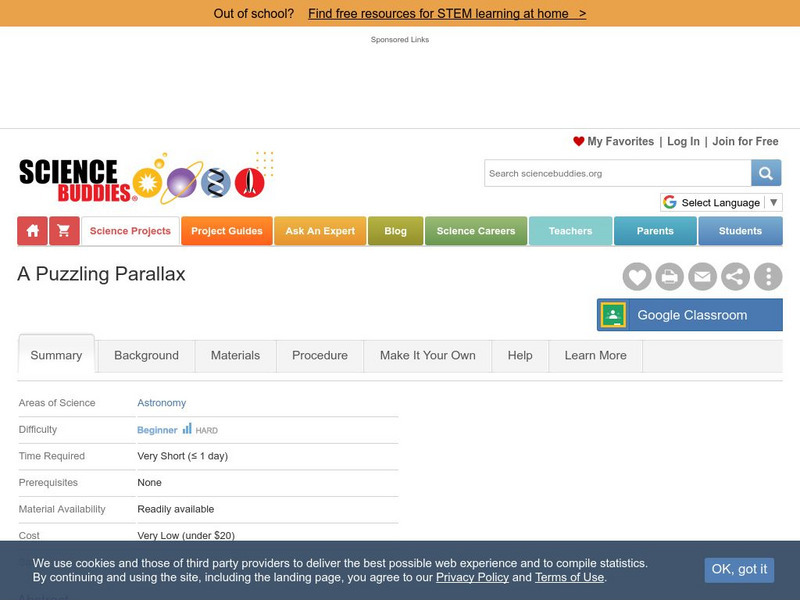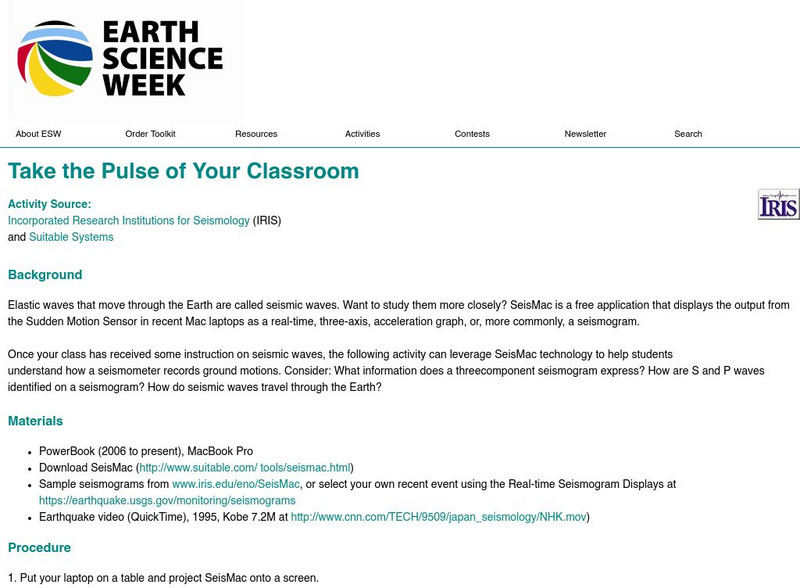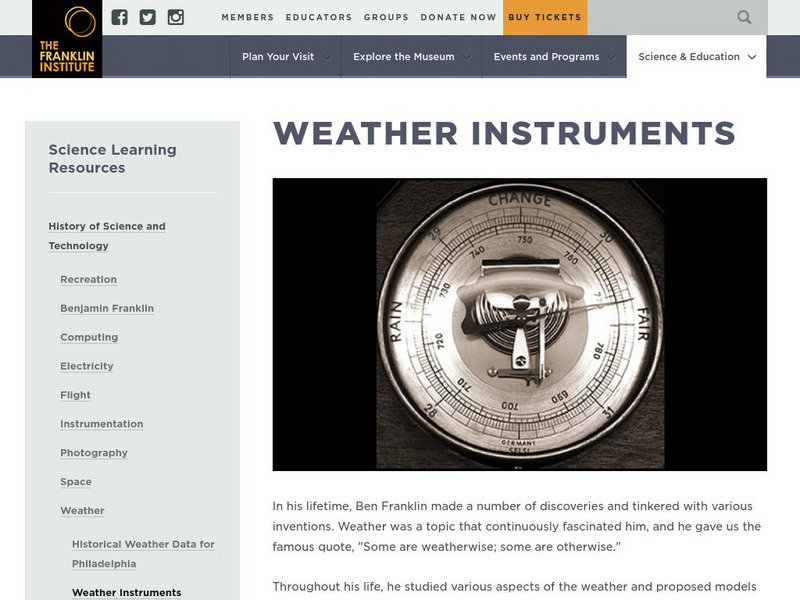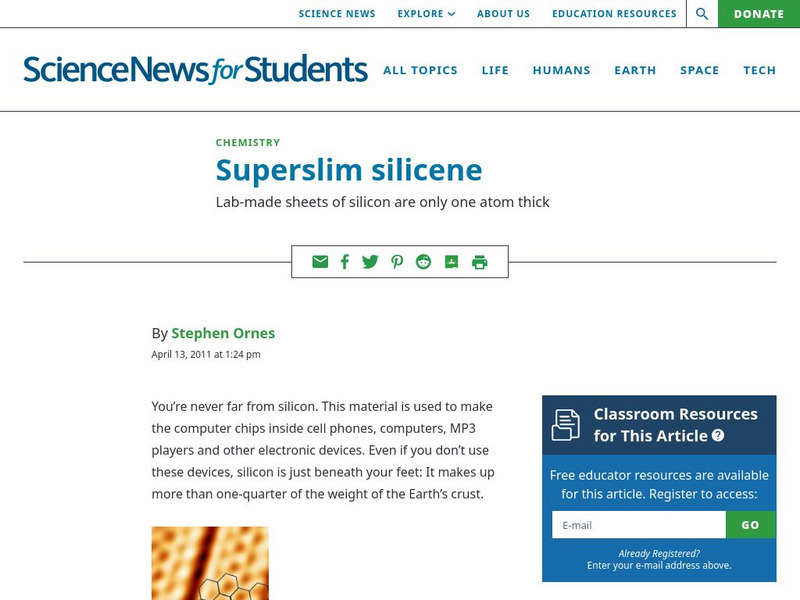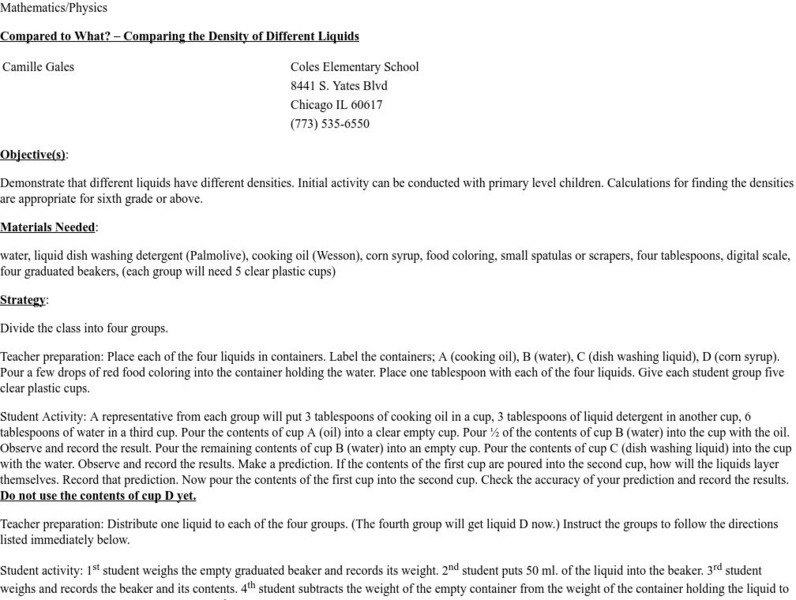PBS
Pbs Learning Media: The Impact of Technology: Cars
This video segment adapted from A Science Odyssey looks at the invention of the automobile and the development of mass production. [4:21]
Science Buddies
Science Buddies: A Puzzling Parallax
Did you know that ancient astronomers could measure the distance to other stars? They could also distinguish between stars and planets. How could they do that without modern technology of telescopes? See if you can discover the link...
Canada Science and Technology Museum
Canada Science and Technology Museum: Background Information for Electricity
The Canada Science and Technology Museum answers some of the most common questions about electricity. For example, get the definition of electricity, the difference between alternating and direct currents, and learn how a fuse works.
PBS
Pbs Learning Media: Technology Timeline
This interactive timeline from the AMERICAN EXPERIENCE Web site features influential technological innovations from 1750 to 1990.
Society for Science and the Public
Science News for Students: One Eye, 3 D
Article describes an experiment for viewing images in 3D without the aid of special technology or glasses. Includes a vocabulary list.
American Geosciences Institute
American Geosciences Institute: Earth Science Week: Take the Pulse of Your Classroom
In this activity, students leverage SeisMac technology to understand how a seismometer records ground motions.
Alabama Learning Exchange
Alex: Researching Hurricanes With Technology
This lesson will help students to understand the formation, power, and history of hurricanes. Students will do this using a combination of technological skills. Examples of technology used include: PowerPoint, Word, Netscape Composer,...
Canada Science and Technology Museum
Canada Science and Technology Museum: Background Information for Sound
Sound! How does it work? All you need to know about it is found here through a series of Q&As. Educators will find useful lesson plans.
Ducksters
Ducksters: History: Renaissance Science for Kids
Kids learn about science achievements during the Renaissance. Explore the inventions and technology of this time in history.
American Geosciences Institute
American Geosciences Institute: Earth Science Week: Places on the Planet: Latitude and Longitude
Students learn how citizen scientists involved in the Geological Society of America's EarthCaching project use GPS technology and latitude and longitude coordinates to find special places on the Earth.
Teachers TryScience
Teachers Try Science: Musical Coat Hangers
From the National Science and Technology Centre in Australia comes this easy experiment that shows how sound waves travel and what materials are good conductors of sound.
Society for Science and the Public
Science News for Students: New Waves for Safe Flying
Discusses technology being used to improve airport security in the wake of the terrorist attacks in recent years. [Date of Article: April 28, 2010]
Society for Science and the Public
Science News for Students: These Gems Make Their Own Way
Discusses past efforts to make artificial gemstones, the different methods used to make them today, and possible applications for this technology. (Date of article: May 25, 2010)
The Franklin Institute
Franklin Institute: History of Science and Technology: Weather Instruments
A look back in time at weather instruments used in previous centuries. Includes pictures and descriptions of instruments from Franklin Institute's historical collection.
Society for Science and the Public
Science News for Students: Superslim Silicene
Discusses research being done with silicene, which is silicon that is one atom thick. Silicene is compared to graphene, both of which have the potential for sparking future innovations in electronics.
American Geosciences Institute
American Geosciences Institute: Earth Science Week: Mapping Quake Risk
Students use GIS to observe worldwide patterns of earthquakes and volcanoes and analyze the relationships of those patterns to tectonic plate boundaries. Then they identify cities at risk.
Technovation
Curiosity Machine: Challenges: Make a Wave Machine
Take the design challenge to make a wave machine with simple materials on this site. Site contains a design challenge and an interactive journal to document the challenge. Find a video with an example of one way to make the wave machine.
Other
Odyssey of the Mind: Digging for Clues
Students explore archeology, dating methods, and the skills and technology needed to be an archeologist through the three activities provided. Activities require research of a historical period, class discussion and creative thinking.
Alabama Learning Exchange
Alex: Organism Power Points/ Booklets
This lesson requires students to use technology to research information on any organism from one of the six kingdoms. Students use the information to produce a PowerPoint presentation or booklet to present to their classmates. This...
Alabama Learning Exchange
Alex: Wired for Learning
As part of a unit on electrical circuits, students will work in collaborative groups to create a video of how to construct parallel and series circuits. This lesson plan was created as a result of the Girls Engaged in Math and Science...
Other
Eureka Science: Cloning
Read this short article to find out about the history of cloning and genetic engineering. Continue on to the next page to find out how cloning is done. Simple terms and fun animations make it easy to read.
PBS
Pbs Teachers: Science Italian Style: Renaissance Machines
Investigate innovative machine designs of the Renaissance, then build a hang glider by following a set of instructions. Modify the design to create a model that can fly longer distances.
Center for Innovation in Engineering and Science Education, Stevens Institute of Technology
Ciese Collaborative Projects: Bucket Buddies: Environmental Study
Bucket Buddies is an opportunity for learners to participate in a world-wide environmental study. By identifying organisms in pond water, participating classes can compare their findings, and look for relationships in data. In addition...
Science and Mathematics Initiative for Learning Enhancement (SMILE)
Smile: Comparing Liquid Density
Because different liquids have different properties, density also differs. In this lesson from the Illinois Institute of Technology, students will calculate densities of water, dish-washing detergent, cooking oil, and other liquids.
Other popular searches
- Physical Science Technology
- Health Science Technology
- (Technology | Science)
- Christmas Science Technology
- Food Science and Technology
- Holt Science and Technology
- Technology and Science
- Science Technology and Society
- Technology +Science
- Technology and Earth Science
- Gps Technology Math Science
- Computer Technology Science

